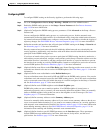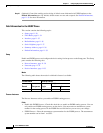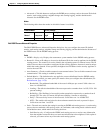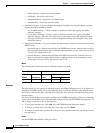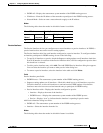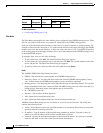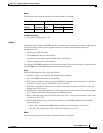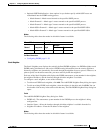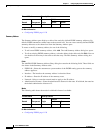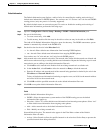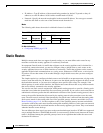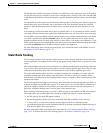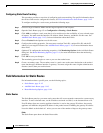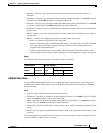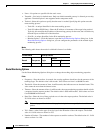
11-37
Cisco ASDM User Guide
OL-16647-01
Chapter 11 Configuring Dynamic And Static Routing
Dynamic Routing
• Optional OSPF Redistribution—these options let you further specify which OSPF routes are
redistributed into the EIGRP routing process.
–
Match Internal—Match routes internal to the specified OSPF process.
–
Match External 1—Match type 1 routes external to the specified OSPF process.
–
Match External 2—Match type 2 routes external to the specified OSPF process.
–
Match NSSA-External 1—Match type 1 routes external to the specified OSPF NSSA.
–
Match NSSA-External 2—Match type 2 routes external to the specified OSPF NSSA.
Modes
The following table shows the modes in which this feature is available:
For More Information
• Configuring EIGRP, page 11-29
Static Neighbor
The Static Neighbor pane displays the statically-defined EIGRP neighbors. An EIGRP neighbor sends
EIGRP routing information to and receives EIGRP routing information from the security appliance.
Normally, neighbors are dynamically discovered through the neighbor discovery process. However, on
point-to-point, non-broadcast networks, you must statically define the neighbors.
Each row of the Static Neighbor table displays the EIGRP autonomous system number for the neighbor,
the neighbor IP address, and the interface through which the neighbor is available.
To configure a static neighbor, so one of the following:
• To add a new EIGRP static neighbor, click Add. The Add EIGRP Neighbor Entry dialog box opens.
• To edit an existing EIGRP static neighbor, select the address in the table and click Edit. You can
also double-click an entry in the table to edit that entry. The Edit EIGRP Neighbor Entry dialog box
opens.
Fields
The Add/Edit EIGRP Neighbor Entry dialog box fields:
• EIGRP AS—The autonomous system number for the EIGRP process the neighbor is being
configured for.
• Interface Name—Select the interface through which the neighbor is available from the list.
• Neighbor IP Address—Enter the IP address of the neighbor.
Modes
The following table shows the modes in which this feature is available:
Firewall Mode Security Context
Routed Transparent Single
Multiple
Context System
• — • ——



